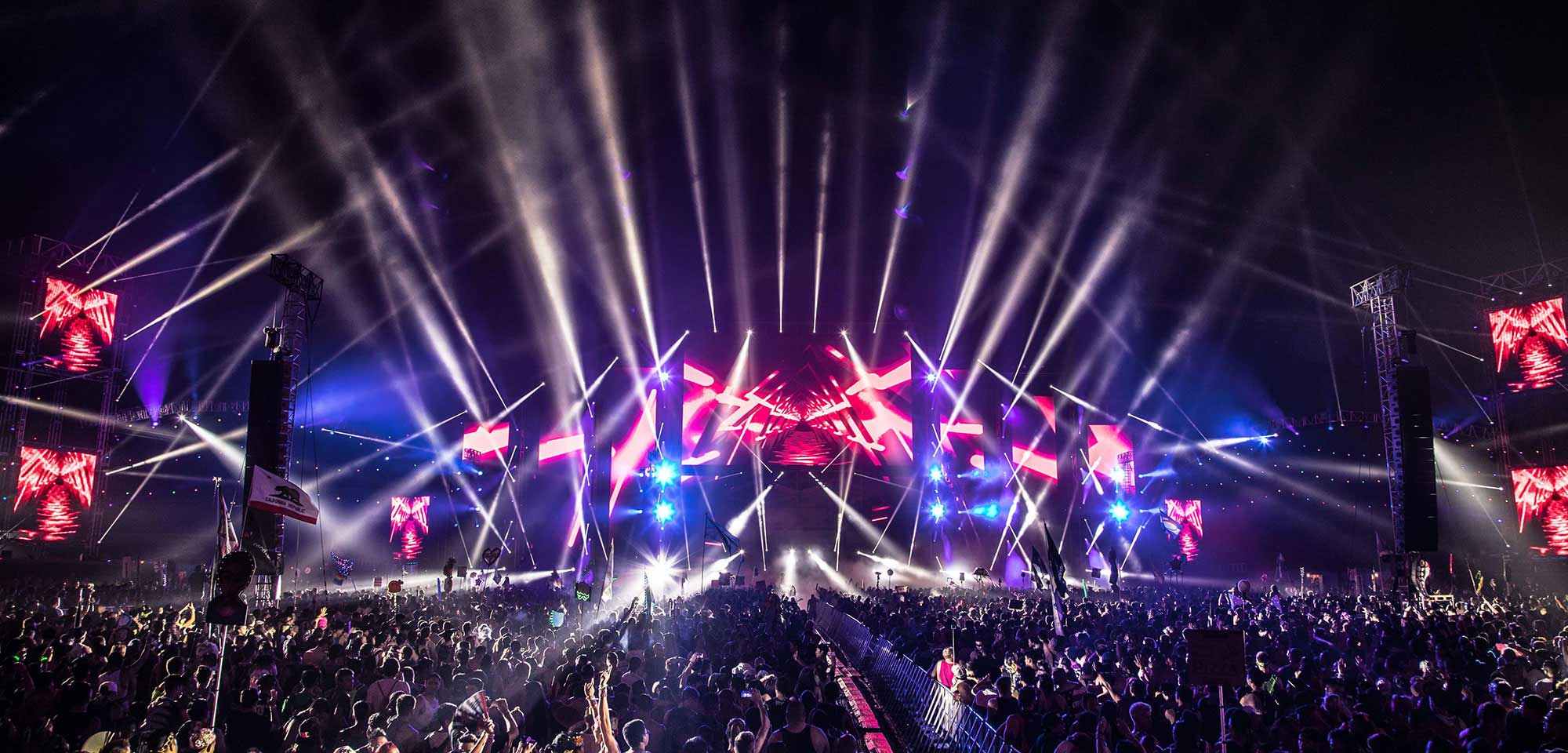Meet the EDM Lights Expert Behind the World's Most Famous Stages
March 10, 2017

Music is just one part of the live EDM experience. To create an experience that completely transports fans, you need to go beyond what they'll hear – and focus on what they'll see.
That's where Steve Lieberman comes in. He was first introduced to the scene while cleaning glasses at a nightclub in the Hamptons in 1986. Today, he's witnessed the rise of festivals, and has become the top EDM lights expert in the industry, working on the lights and visual design of festivals like Coachella, EDC, Insomniac, and Ultra.
Keep reading to learn Lieberman's take on the industry's history, the EDM scene, and how lighting can turn a festival or a room into an unforgettable rave.
The birth of the EDM concert scene
Lieberman was in New York when raves started to gain popularity around 1990. "My friends were doing lights for raves, underground illegal events in New York," he says. "I remember one in particular. They set up a show in an abandoned warehouse on the Lower West Side of Manhattan. We went inside and there were abandoned cars within the building. The party didn't last more than two hours before the fire department threw us out."
In this pre-Google Maps era, Lieberman remembers tapping power from electrical boxes on telephone polls, buying tickets at record stores, and getting handed a postcard-size photocopy with "terrible directions" to the show. There would be six to eight lights on stands on the stage, with a controller 15 feet away.
"It was not even close to what we do now," he says. "I was popular among my friends because I had a Chevy with enough room to fit us and the lights. There was no money involved – maybe $100."
The EDM industry grows up – and rave lights become a business
Lieberman's story almost diverged from EDM's in the early 1990s as he started school. But he came back to New York during the summers, where his buddies set up raves and nightclub installations. Soon, he was back in the business of concert lighting for underground shows.
"In the last year of college, I had this epiphany that I really didn't like being a student in the traditional sense, with class every day," Lieberman says. So he drove to Manhattan and started doing EDM lights full-time, eventually starting his own company.
Lieberman struggled in the fledgling concert lighting business for the about 10 years, but he wasn't the only one hooked on the flashing lights and pulsing beats. Eventually, EDM grew up.
"EDM was blowing up in the U.S.," Lieberman says. "They were starting to get a little bit more legitimate, but quasi-legit – still getting shut down."
Soon every guy who liked techno thought he was a rave promoter, Lieberman says. The West Coast scene exploded. He worked on festivals like Miami's Ultra – at the time, 5,000 people on the beach; now consistently 50,000.
"Raves and EDM were the bottom of somebody's shoe as far as the rock ‘n' roll community was concerned," he says. "But fast-forward 20 years..."
Today, electronic artists are streamed more than any other genre on Spotify, and more people than ever are attending music festivals.
Tricks of the EDM lights trade
The industry is always changing and new lighting technology is a dime a dozen. But Lieberman has learned a few tricks along the way to make EDM light designs that stand the test of time, no matter the venue.
"When you're designing festival lighting, we're doing stage design. We don't have the infrastructure of a nightclub," he says, noting that festivals' budgets tend to dwarf nightclubs'. "I build a small city and spend a small fortune for an EDC stage for a three-day show. Whereas I'll spend just a percentage of that on venue lights that live four to six years. So the tools are very different."
The lighting strategy also varies by show. Festivals like Coachella give every headliner their own design package, changing everything out every night. Others, like Insomniac, hold tight to the festival's design aesthetic, not the artists'.
"EDM lighting isn't just about being artsy," Lieberman says. "It's the balance of budgets, production details, timeline, personnel, and creativity."
Whether doing lights for festivals or venues, "one of the best parts about my job is we get to play with all the new toys, entertain people, and create new experiences," Lieberman says.
Lieberman isn't so much a cheerleader of new concert technology as a veteran technician who thinks the best new innovations are simply using existing tech in new ways.
"It's not the new tech that's exciting; it's the application and execution of old tech that's exciting," he explains. "The mirrorball is the most iconic equipment to put into a space; it's just how you use it. What gets me excited is somebody taking tech that's available and using it in a new and innovative way."
To find out more about innovations in the concert lighting and technology space, check out 20 more experts' predictions for the future of concert technology here.
